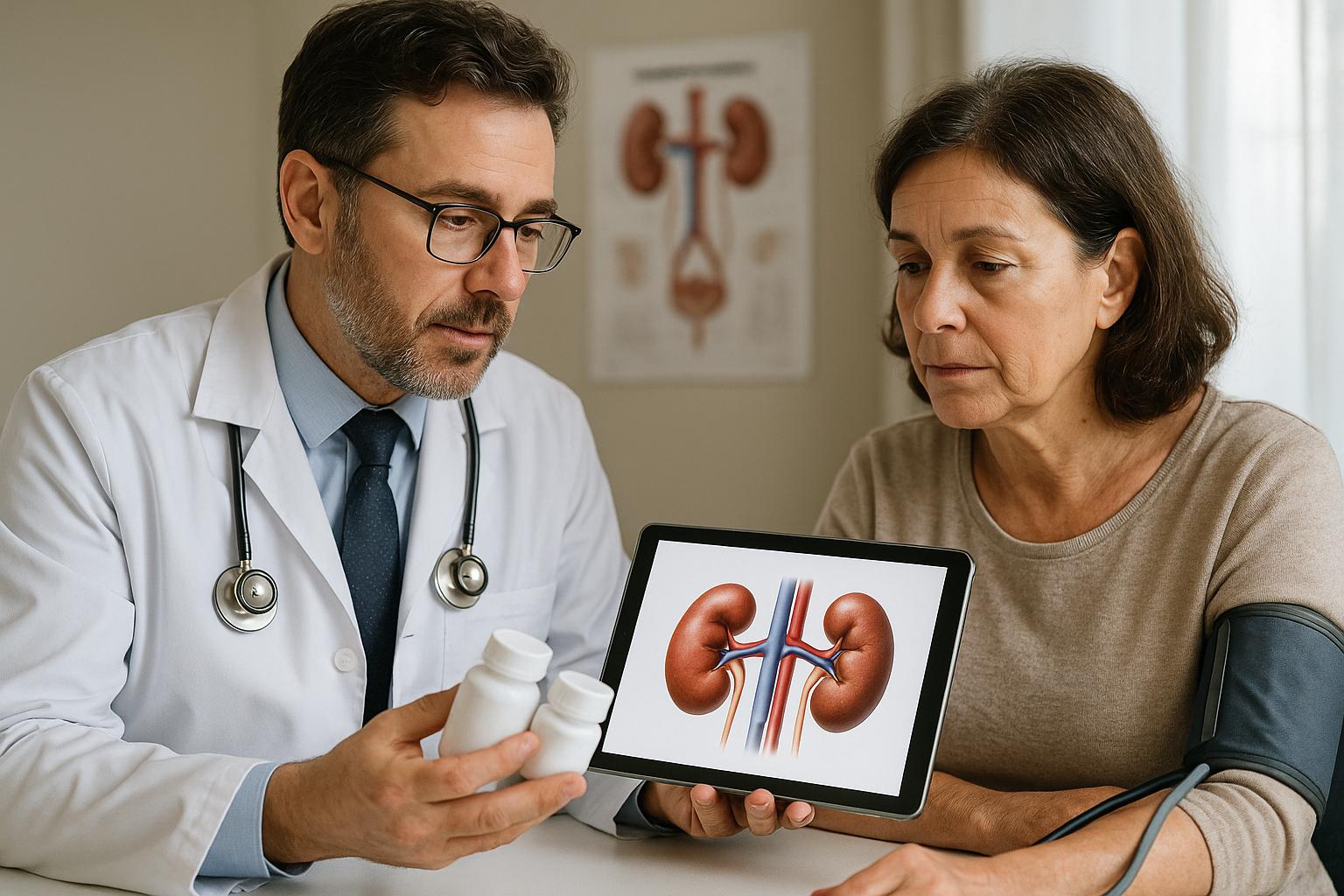When managing type 2 diabetes, the focus often extends beyond blood sugar levels to include kidney health. Over time, high glucose levels can wear down kidney function, eventually leading some patients toward dialysis or transplantation. A new study, however, offers a glimmer of hope for both patients and healthcare providers.
Published in the New England Journal of Medicine in June 2025, the study explores the combined use of two existing medications — finerenone and empagliflozin — as a strategy to slow the decline of kidney function in people with type 2 diabetes. The results? A significant reduction in albuminuria, a key marker of kidney damage, was observed when both medications were introduced simultaneously.
A Shift in Treatment Approach
Traditionally, doctors take an incremental approach to treatment: begin with one drug, monitor its effects, then consider adding another. This method minimizes the risk of side effects but may also delay more effective intervention. The new trial challenges that norm by beginning therapy with both medications up front.
Study researcher Dr. Carl-Magnus Hake of Skåne University Hospital in Sweden commented, “This is a slightly new way of thinking. Normally, we introduce one drug at a time.” The early results suggest that a more assertive strategy might provide better protection for kidneys when multiple issues like high blood sugar and emerging kidney disease converge.
The Medications Involved
- Finerenone: A non-steroidal mineralocorticoid receptor antagonist that helps reduce inflammation and scarring in the kidneys.
- Empagliflozin: A sodium-glucose cotransporter-2 (SGLT2) inhibitor that not only lowers blood sugar but also offers cardiovascular and renal benefits.
The combination showed more noticeable benefits in reducing albumin in the urine — an indicator that kidneys are under less stress. That may not sound exciting, but for nephrologists, it signals reduced inflammation and a steadier hold on kidney function.
What This Means for Patients
Less albuminuria could translate to:
- Fewer hospital visits.
- Delayed onset of dialysis.
- Improved quality of life over time.
Even modest improvements in kidney health can lead to substantial lifestyle benefits — and that’s something both patients and clinicians pay close attention to.
Considerations and Cautions
Despite the promising results, it’s important to acknowledge the trial’s funding sources: Bayer and Boehringer-Ingelheim, the pharmaceutical companies behind the two medications. While their support necessitates cautious review, publication in the NEJM adds credibility to the scientific process that led to these findings.
Dr. Hake offers a note of caution: “The result is good. But more research is needed before this changes standard practice.” Future studies will aim to assess long-term outcomes like the delay of dialysis or occurrence of strokes, as well as any potential risks associated with early combination therapy.
The Road Ahead
For patients with type 2 diabetes and early chronic kidney disease, this research signals potential new avenues for protection and care. It challenges longstanding practices, suggesting that earlier combination therapy might yield better long-term outcomes than slowly ramping up medication use.
While it may be too soon for broad adoption, the buzz generated by this study is already sparking discussions across medical communities. And for patients facing the long-term threat of kidney disease, even modest improvements can feel like a major breakthrough.
Have experience with combination treatments for diabetes-related kidney issues? We’d love to hear your story in the comments.
Sources:
- New England Journal of Medicine, June 2025
- Dagens Medicin, June 26, 2025
- Interview with Dr. Carl-Magnus Hake, Skåne University Hospital
